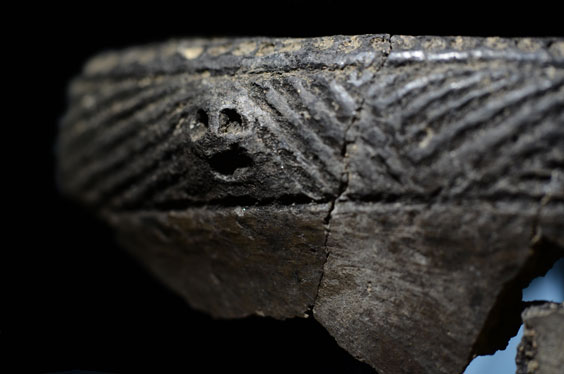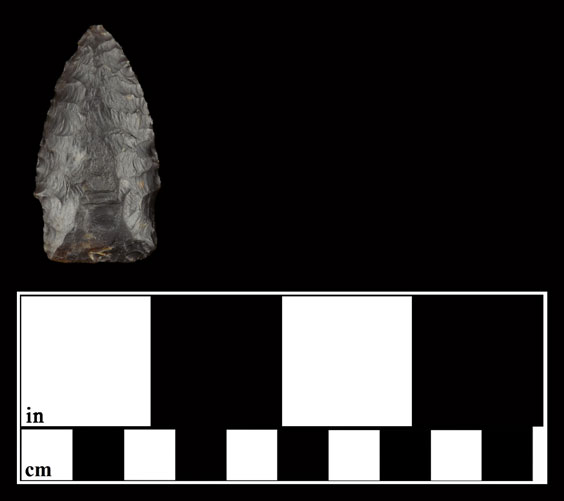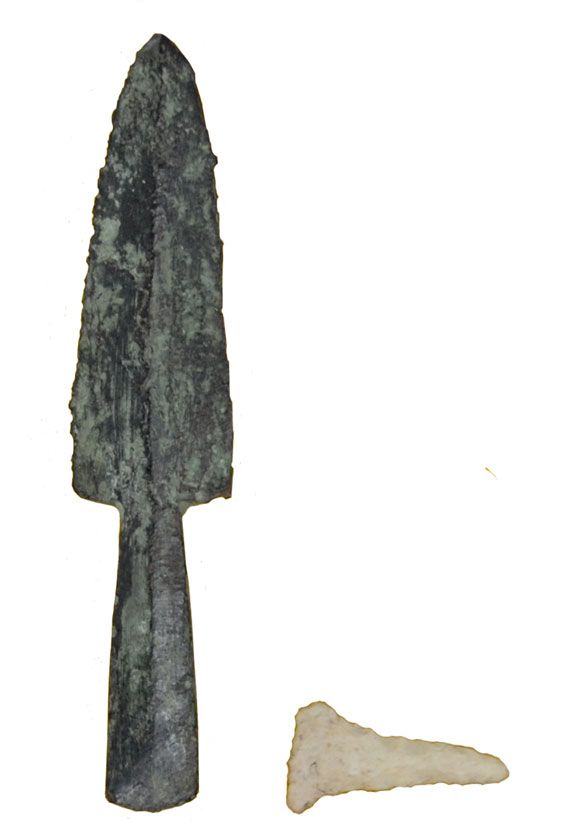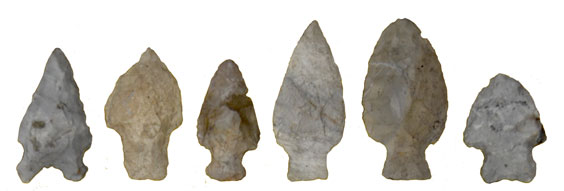A variety of things are always happening in North Dakota’s archaeology collections. Here are just three highlights from the past few months.
In November, I went with several other staff to help deinstall the Scattered Village display at the Mandan Public Library. Scattered Village (32MO31) was a Mandan village. Part of the current city of Mandan is now located on top of this archaeological site. Some of the village was excavated during street work in the 1990s, and the artifacts on display are from that project. The ceramics are a lot of fun to look at up close. For instance, there is an animal effigy on this large pot fragment.

A reconstructed straight rim pot with an animal effigy from Scattered Village (32MO31). SHSND AHP 99.10.V9.302.2740
This vessel fragment below is elaborately decorated—you can see the marks from the paddle used to shape the vessel on the lower part, while the top part is decorated with cord-and-tool impressions.

A reconstructed Knife River ware rim with cord-and-tool impressions from Scattered Village (32MO31). SHSND AHP 99.10.V2.278.2935
I also can’t help but like the tiny face on this rim sherd pictured below.

Detail of a face-like effigy on a Le Beau ware rim from Scattered Village (32MO31). SHSND AHP 99.10.V6.256.2932
Another highlight was a donation of Paleoindian projectile points from a site in McLean County (32ML1350). The points in this collection are around 9,000 years old. They are very finely made, and the edges are still rather sharp. This kind of point is called an Eden point; it is made from Knife River flint.

An Eden projectile point, made of Knife River flint, from 32ML1350. SHSND AHP 2020A.3.47
This Eden point, below, is made from porcellanite.

A porcellanite Eden projectile point from the McLean County site (32ML1350). SHSND AHP 2020A.3.44
This is a Scottsbluff projectile point. It is also made from Knife River flint.

A Scottsbluff projectile point made of Knife River flint from 32ML1350. SHSND AHP 2020A.3.41
Another fascinating donation came from southeastern North Dakota. We were excited to receive it since we don’t have many collections from that part of the state. It includes several large trays of projectile points, drills, and other objects.

This copper point and stone drill are from southeastern North Dakota. SHSND AHP Maercklein Collection
Many of the points, including the one above, are from the Archaic period, which lasted from approximately 5500 B.C. to 400 B.C.

Here are a few of the many projectile points from this donation. We so appreciate the generosity of these donors. SHSND AHP Maercklein Collection

